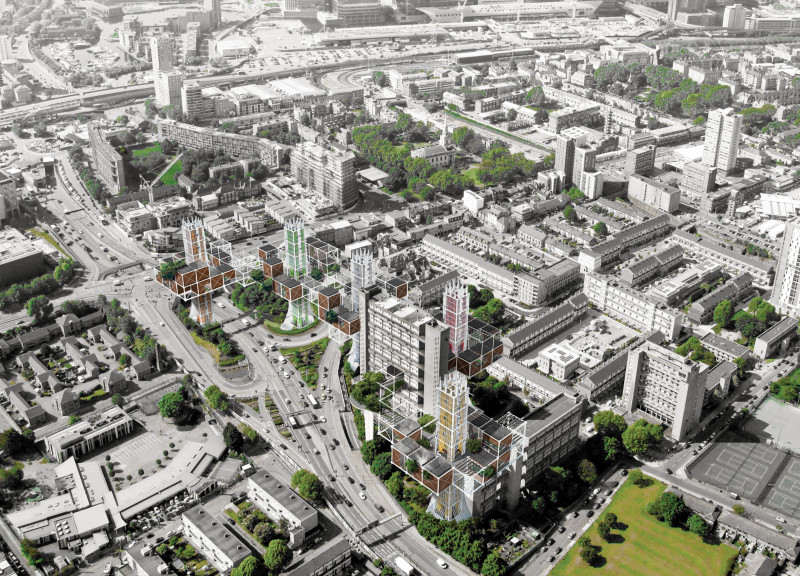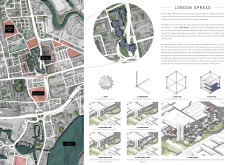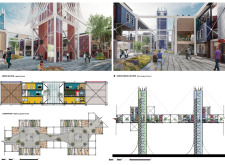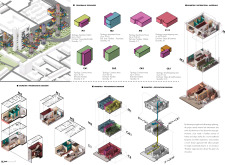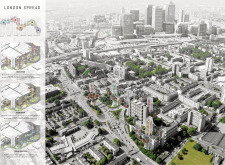5 key facts about this project
The design located in London seeks to address the urgent need for housing, as the city faces a demand that exceeds three million homes. Centered around Balfron Tower, the proposal features a modular mega-structure aimed at easing housing shortages while ensuring compatibility with the surrounding urban environment. The overall design focuses on flexibility and adaptability, allowing for vertical stacking and varied living spaces that align with the traditional backdrop of the city.
Concept and Structure
At the center of the design is a grid system that acts as the basis for the structure. This grid overlays the existing urban landscape, helping to blend the new development with its surroundings. The arrangement allows for the stacking of modules, providing stability while maximizing the use of space above ground. These vertical masts serve critical structural roles and also accommodate mechanical systems, which helps streamline operations throughout the building.
Community-Centric Spaces
Public areas are an important aspect of this design. They foster social connections and build a sense of community among residents. Plazas and promenades are arranged between the towers, encouraging movement and interaction among users. These shared spaces provide places for leisure and socializing, allowing people to enjoy their neighborhood while accessing shops and other services nearby.
Sustainability Initiatives
The design places emphasis on environmentally friendly practices. Features like solar roofs on the living units reduce the need for traditional energy. Additionally, the collection of rainwater maintains green public spaces, supporting responsible resource use. Such measures lower the overall environmental impact and promote sustainability within the urban setting.
Material Consideration
While specific materials are not mentioned, the approach to the structure highlights a focus on durability and efficiency. The modular design aims to provide long-lasting solutions that require minimal maintenance in an urban environment.
The elevated structure offers expansive views of the city and allows ample natural light into shared spaces. This quality enhances the living experience and fosters a welcoming atmosphere for all residents.


